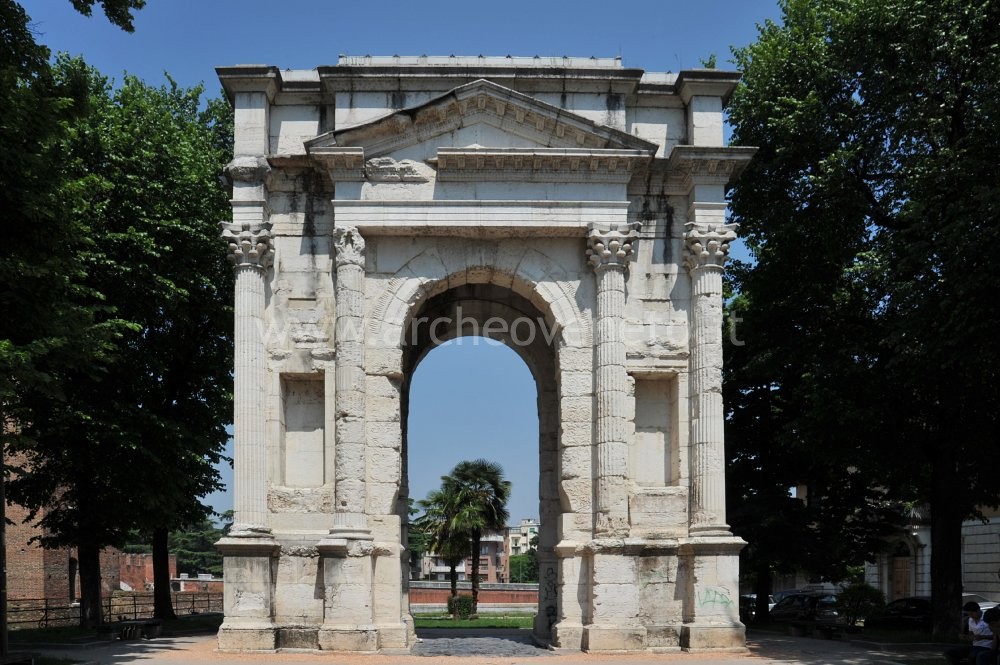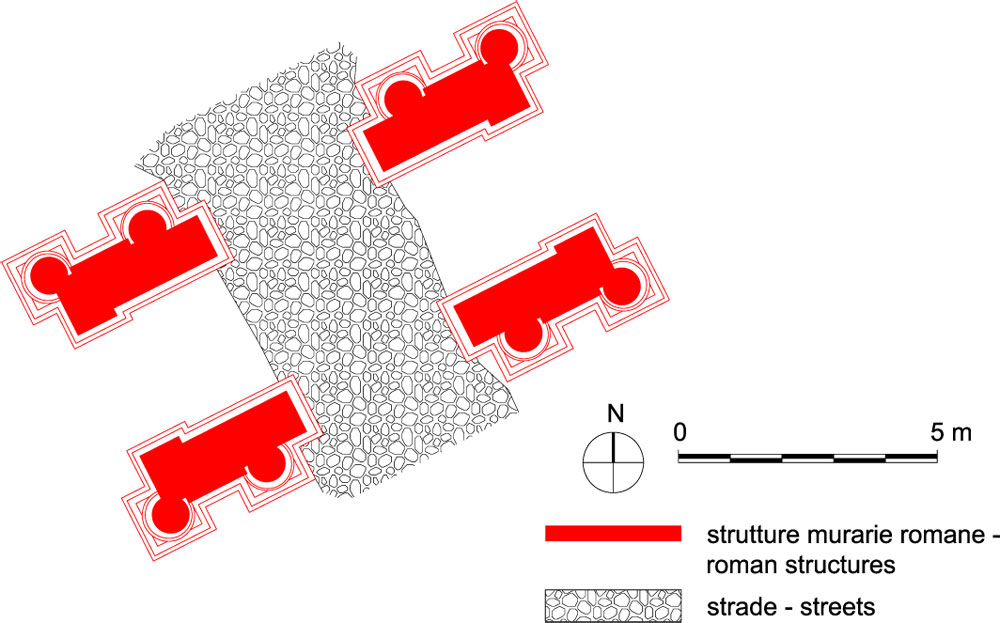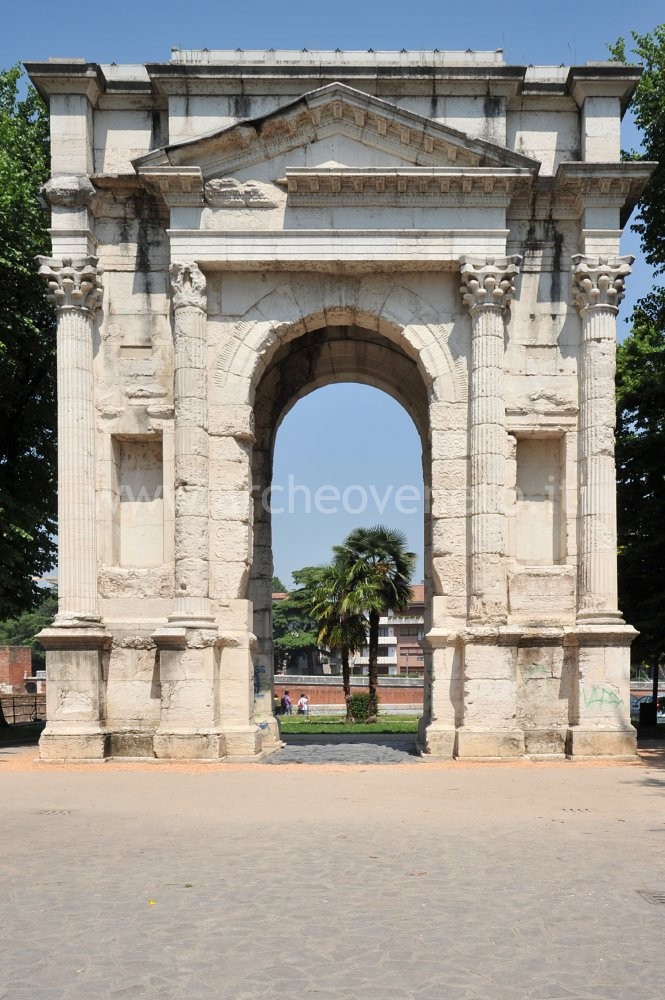| Corso Cavour 43, Piazzetta Castelvecchio - 37100 Verona (VR)
|
|
|
Summary
The archway “Arco dei Gavi” is a monument of the I century A.D. which was built by an important family of Verona, the “gens Gavia” for self-celebration purposes. Originally the archway had been constructed along the road “Via Postumia”, the big consular road that reached Verona. In 1805 was considered as a hindrance to local traffic and was dismantled. In 1932 the archway was reconstructed in a different location. However, the previous positioning of its pillars is marked on the paving in front of the Museum of Castelvecchio in the street “Corso Cavour”.History of research
Originally the archway “Arco dei Gavi” was on the road “Via Postumia”, in line with the gate “Porta Borsari”, 550 metres far from the latter. What we can see today is the reconstruction of this monument, out of its original positioning. The reconstruction was carried out in 1932 after it was dismantled in 1805.
Urban and geographical context
Verona is located along the Adige river, where this enters in the Po plain, at about thirty kilometres east to the Garda lake. Its altitude is 59 metres above sea level and it is placed at the basis of the Lessini mountains. The honorary archway “Arco dei Gavi” was located just out of the Roman town, on its west side, about 800 metres from the gate “Porta Borsari”.
Chronology
I century A.D. (first half) |
 |  |
|
Visiting
Admission: Libero;
Visitability: Esterno;
Ticket: No;
 School access School access
|
Recommended tour time (minutes): 40 |
|
Services for visitors
|
Educational Services
|
Bibliography
| Mangani E., Rebecchi F., Strazzulla M.J. 1981, Emilia, Venezie (Guide Archeologiche Laterza), Bari, pp. 176-178. |
| Tosi G. 1983, L'arco dei Gavi, Roma. |
| Cavalieri Manasse G. 1987, Verona, in Il Veneto nell'età romana, II, a cura di Cavalieri Manasse G., Verona, pp. 33-34. |
| Archeologia a Verona 2000, a cura di Bolla M., Milano, pp. 84-85. |
| Tosi G. 2003, Gli edifici per spettacoli nell’Italia romana, Roma, pp. 537-540. |
| Bonetto J. 2009, Veneto (Archeologia delle Regioni d'Italia), Roma, pp. 448. |
